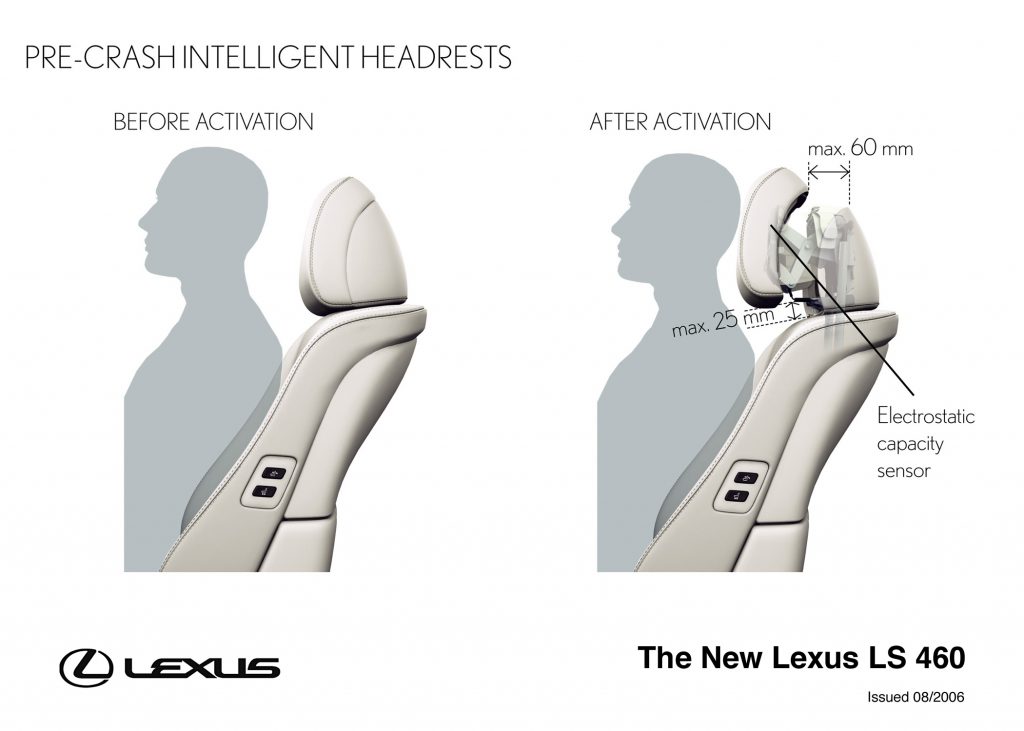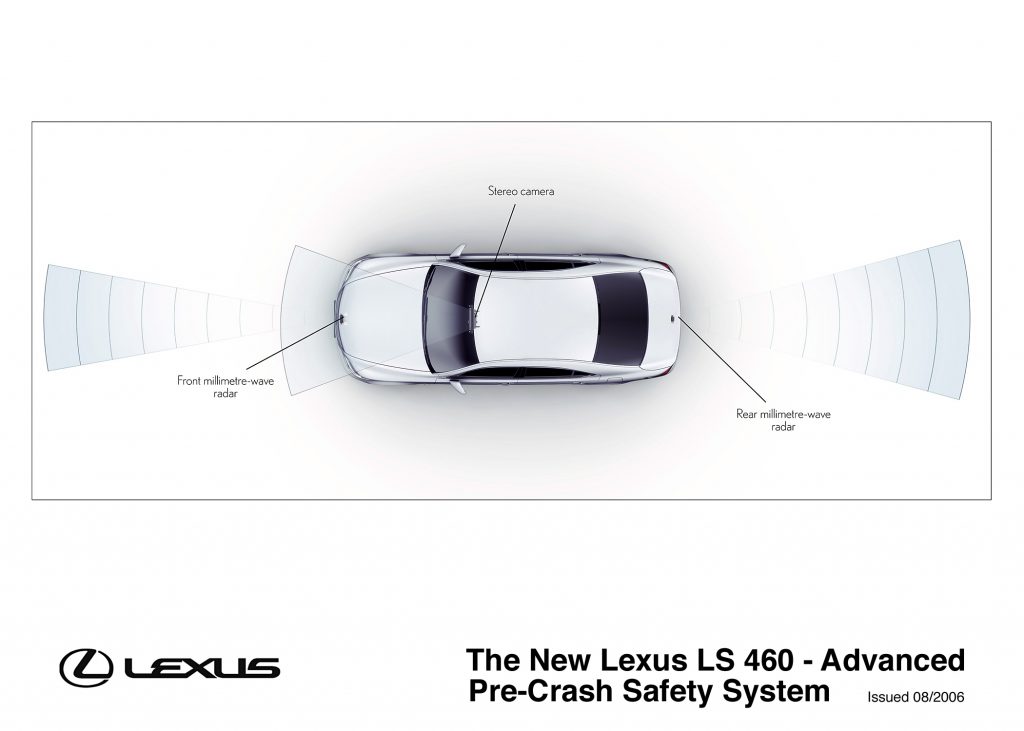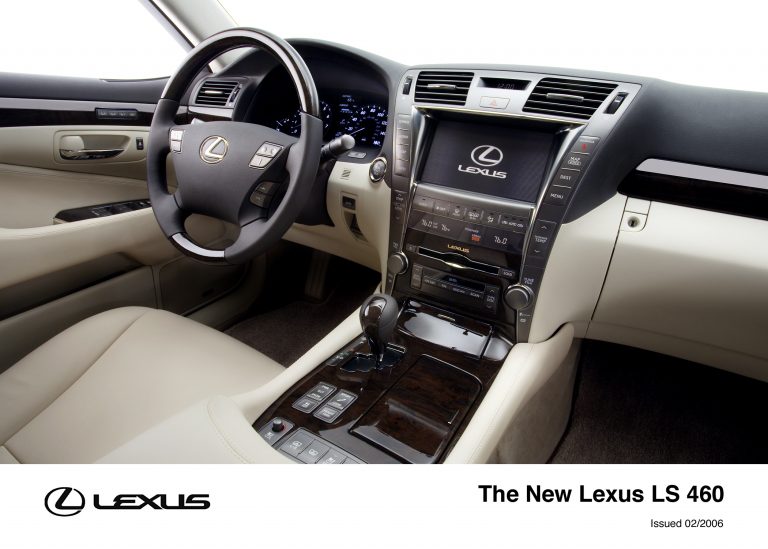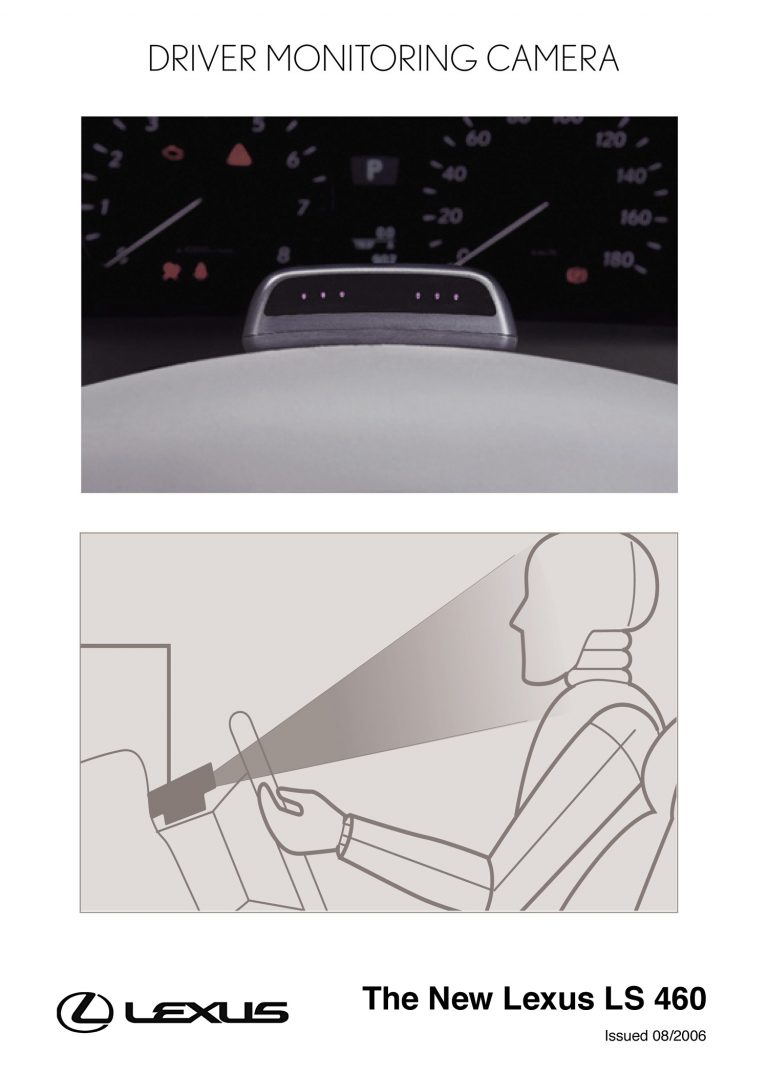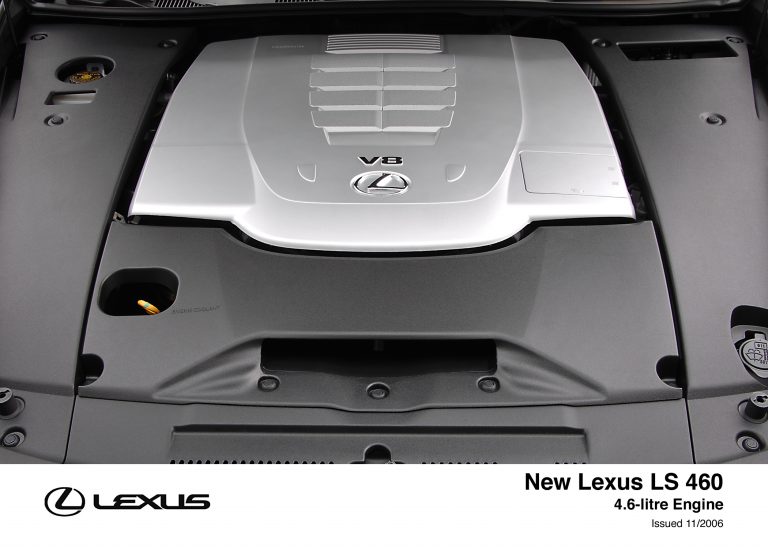Lexus LS 460 Achieves World First In Preventive Safety
New flagship model equipped with advanced pre-crash systems
KEY POINTS
- Advanced Obstacle Detection System can pick wide range of obstacles on the road ahead, including pedestrians, in day and night-time driving
- Emergency Steering Assist helps the driver take rapid, evasive action to avoid a collision
- World-first Driver Monitoring System, initiates safety warnings and pre-crash systems if a collision risk is detected when the driver is not looking at the road ahead
- Rear Pre-Crash Safety System adjusts front headrests to reduce risk of whiplash injury
Lexus is pushing the boundaries of passenger and pedestrian protection with the introduction of world-leading preventive safety technology in its new LS 460 flagship limousine.
The all-new LS, which will be launched in the UK early next year, benefits from substantial developments in the Pre-Crash Safety (PCS) system Lexus has already introduced in other models in its range. Engineers at the Lexus Development Centre have successfully incorporated more sophisticated and advanced features, which anticipate and react automatically to a wider range of collision-risk scenarios.
This advanced technology recognises when a collision is imminent, helps the driver to take action to prevent it happening, and, if the worst does happen, reduces the risk of injury to the car’s occupants and to pedestrians.
ADVANCED OBSTACLE DETECTION SYSTEM
The new Advanced Obstacle Detection System can detect a wide range of obstacles ahead of the vehicle, including – for the first time – pedestrians. Depending on weather conditions, it will work during both day and night-time driving.
The system combines information gathered from a front-mounted millimetre-wave radar, as used in Lexus’s established PCS system, and a twin-lens infrared stereo camera located on the top edge of the windscreen. The camera picks up near-infrared radiation, emitted from dedicated units built into the car’s headlamp high-beam projectors, when it is reflected off objects directly ahead, up to 25 metres distant.
EMERGENCY STEERING ASSIST
The Emergency Steering Assist system improves the vehicle’s response to driver steering input, selecting the best gear ratio for rapid evasion manoeuvres and increasing the chances of avoiding a collision. It works through close interaction between the car’s Variable Gear Ratio Steering (VGRS), Vehicle Dynamics Integrated Management (VDIM) and Adaptive Variable Suspension (AVS) systems.
The VGRS actuator, which is attached to the steering rack, reduces the steering gear ratio to provide more direct steering and improve response to driver input. At the same time, the AVS adopts a stiffer damper setting to minimise body roll and optimise chassis balance, for better vehicle response. The VDIM governs selective brake control, to control the vehicle’s yaw rate, allowing for quick changes of direction without threatening the car’s overall stability.
DRIVER MONITORING SYSTEM
The new LS 460 is equipped with the world’s first driver monitoring system, designed to warn of dangers ahead if the driver takes his or her eyes off the road.
A CCD (charge-coupled device) camera is mounted on top of the steering column cover with six built-in near-infrared LEDs, which enable the system to work accurately both day and night.
When the vehicle is started up, the system automatically plots the position of the driver’s facial features – eyes nose and mouth – and measures the width and centre line of the face. This information is used as a reference as it monitors movement of the driver’s head when looking from side to side.
If the driver turns his or her head away from the road ahead while the vehicle is moving and an obstacle is detected in front of the vehicle, the system automatically activates a pre-crash warning light and buzzer. If the situation persists, the brakes are briefly applied to alert the driver. And if this still fails to elicit action from the driver, the PCS engages emergency braking preparation and front seatbelt pre-tensioning.
Before being brought to market, the system has been tested with more than 100 drivers, covering more than 100,000km. As long as the driver’s face is in the clear sight-line of the camera, it will function accurately regardless of the driver’s seat position, facial characteristics, or if sunglasses are being worn.
PRE-CRASH SAFETY – OPERATING SEQUENCE
When the Advanced Obstacle Detection System identifies obstacles ahead, the Pre-Crash Safety system assesses the likelihood of collision based on the position, speed, and trajectory of the obstacle. If the collision probability is high, a warning buzzer and red BRAKE! Alert on the multi-function display are activated.
After testing the reactions of a number of drivers, Lexus engineers determined the best engagement timing for all PCS functions to improve the chances of the driver reacting in time to prevent the collision happening.
To help avoid an impact, PCS automatically activates a series of integrated safety systems:
- Pre-Crash Brake Assist: system is put on stand-by to give maximum brake pressure the moment the driver presses the brake pedal.
- Emergency Steering Assist: improves steering response to driver input.
- Adaptive Variable Suspension: stiffens the dampers, controlling nose dive when pre-crash braking is engaged and increasing the car’s responsiveness to evasion steering.
If the system determines a collision cannot be avoided, it activates the Pre-Crash Seatbelt: the front belts are pre-tensioned, with any slack taken up to maximise initial restraint performance. Pre-Crash Brake Assist automatically engages the brakes to reduce vehicle speed at the point of impact.
Pre-Crash Seatbelt pretensioners are also activated if the vehicle’s yaw rate goes above a certain threshold at speeds of more than 9.5mph (15km/h).
REAR PRE-CRASH SAFETY SYSTEM
LS 460 features the world’s first Rear Pre-Crash Safety system, using a millimetre-wave radar set into the rear bumper. This constantly scans the area around the back of the car, both when the vehicle is on the move and parked.
If a collision is calculated to be unavoidable, the system activates the front seat Pre-Crash Intelligent Headrests. These move up to 60mm forwards and 35 mm upwards to cushion the head in anticipation of an impact, greatly reducing the risk of whiplash injury. The headrests are fitted with a sensor that measures the distance between the passenger’s head and the headrest itself, so there is no risk of the emergency adjustment itself causing substantial contact. The system does not operate if the seat is unoccupied.
ENDS


